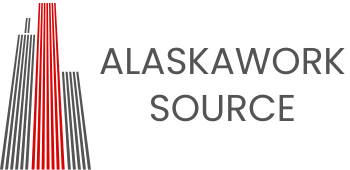Imagine wanting to buy a home but feeling like your savings account is playing hide and seek. Enter zero down payment loans—the superhero of home financing that swoops in to save the day. These loans allow potential homeowners to skip the hefty down payment, making the dream of owning a home feel less like a fantasy and more like a reality.
Table of Contents
ToggleUnderstanding Zero Down Payment Loans
Zero down payment loans offer an attractive option for many prospective homeowners. These loans provide full financing for the purchase price, allowing buyers to avoid hefty upfront costs. Various lenders and programs support this financial solution, providing access to homeownership for individuals with limited savings.
Government-backed loans, such as VA loans and USDA loans, are common examples of zero down payment options. VA loans, available for veterans and active military members, often require no down payment and offer favorable terms. Similarly, USDA loans support rural homebuyers and also eliminate the down payment requirement.
Credit requirements typically vary among lenders. Some may favor higher credit scores, while others might accept lower scores, allowing more buyers to qualify. Lenders assess income, employment history, and overall financial stability when reviewing applications.
Fees and additional costs matter in these loans. Although no down payment is required, borrowers may face closing costs and insurance fees. Be sure to factor these expenses into the overall budget.
Many advantages exist with zero down payment loans, including improved cash flow for buyers. Homeowners can allocate funds toward renovations, moving expenses, or emergency savings. Additionally, rising home prices make timing crucial; entering the housing market sooner can yield better long-term investment results.
While zero down payment loans provide an opportunity for homeownership, borrowers should conduct thorough research. Understanding eligibility requirements, associated costs, and long-term implications significantly impacts the decision-making process. Taking these factors into account leads to informed choices in achieving homeownership goals.
Types of Zero Down Payment Loans

Understanding different types of zero down payment loans helps potential homeowners find the right option. Each type has unique features tailored to specific borrower needs.
VA Loans
VA loans offer veterans and active-duty military members a path to homeownership without a down payment. These government-backed loans don’t require private mortgage insurance, reducing monthly payments. Eligible borrowers can benefit from competitive interest rates and lenient credit requirements, which often include scores as low as 620. The funding fee can be rolled into the loan, minimizing upfront expenses. Veterans can access funding for various property types, including single-family homes and condos.
USDA Loans
USDA loans cater to rural homebuyers seeking affordable housing options without a down payment. These loans, backed by the U.S. Department of Agriculture, support low-to-moderate-income borrowers in designated rural areas. Eligibility hinges on household income and location, with limits set at 115% of the area’s median income. No down payment requirement makes USDA loans appealing, while lower mortgage insurance costs lead to reduced monthly payments. Properties must be primary residences, further encouraging rural development.
FHA Loans
FHA loans bring flexibility to borrowers with lower credit scores or limited savings. The Federal Housing Administration insures these loans, allowing lenders to offer 3.5% down payments. Although several down payment assistance programs can help first-time buyers, some allow loans without any down payment through various state initiatives. Borrowers with credit scores as low as 580 can qualify, giving more individuals access to homeownership. FHA loans cover various property types, enhancing options for buyers.
Advantages of Zero Down Payment Loans
Zero down payment loans provide significant benefits for aspiring homeowners, particularly for those facing challenges in saving for a down payment. These loans enhance accessibility and foster financial flexibility for buyers.
Accessibility for First-Time Homebuyers
First-time homebuyers find zero down payment loans particularly appealing. These loans remove the barrier of a hefty upfront payment, facilitating access to homeownership. VA and USDA loans represent key options for those who qualify, offering full financing without the need for a down payment. Many first-time buyers often face financial constraints, making these loans a viable solution. By providing alternatives for limited savings, these loans support individuals in entering the housing market sooner.
Financial Flexibility
Financial flexibility becomes essential with zero down payment loans. Buyers can allocate funds typically reserved for down payments toward closing costs or home improvements. Lower upfront costs allow room for budgeting other expenses, such as initial home repairs or moving costs. Many homeowners appreciate the opportunity to invest in renovations or create emergency savings. Enhanced cash flow often leads to better financial management and long-term investment potential. With fewer immediate financial burdens, buyers can enjoy a more secure and stable homeownership experience.
Disadvantages of Zero Down Payment Loans
Zero down payment loans, while beneficial, come with notable drawbacks. Awareness of these disadvantages helps potential borrowers make informed decisions.
Higher Monthly Payments
Higher monthly payments often accompany zero down payment loans. Lenders structure these loans to offset the lack of an upfront payment, leading to larger payments over the life of the mortgage. Borrowers typically finance the entire purchase price, increasing loan amounts and monthly obligations. These payments might strain budgets, especially for those new to homeownership or managing other financial responsibilities. Evaluating affordability before committing to a zero down payment loan proves crucial.
Potential for Negative Equity
Negative equity presents another risk for borrowers using zero down payment loans. This situation occurs when the mortgage balance surpasses the property’s market value. In volatile real estate markets, property values might decline, heightening the chances of negative equity for homeowners. Selling an affected home could result in losing money if the sale price doesn’t cover the outstanding loan amount. Homeowners in this position face challenges, as they may struggle to refinance or sell without incurring significant losses. Enticing as they appear, the potential for negative equity remains a critical consideration for those pursuing zero down payment loans.
Zero down payment loans present a valuable opportunity for aspiring homeowners to achieve their dreams without the burden of a large upfront cost. These loans can significantly ease the path to homeownership, especially for first-time buyers and those in challenging financial situations.
However, it’s crucial for potential borrowers to weigh the benefits against the drawbacks. Higher monthly payments and the risk of negative equity can impact long-term financial stability. By conducting thorough research and understanding eligibility requirements, individuals can make informed decisions that align with their financial goals. Embracing this financing option can lead to a rewarding homeownership experience when approached with careful consideration and planning.




